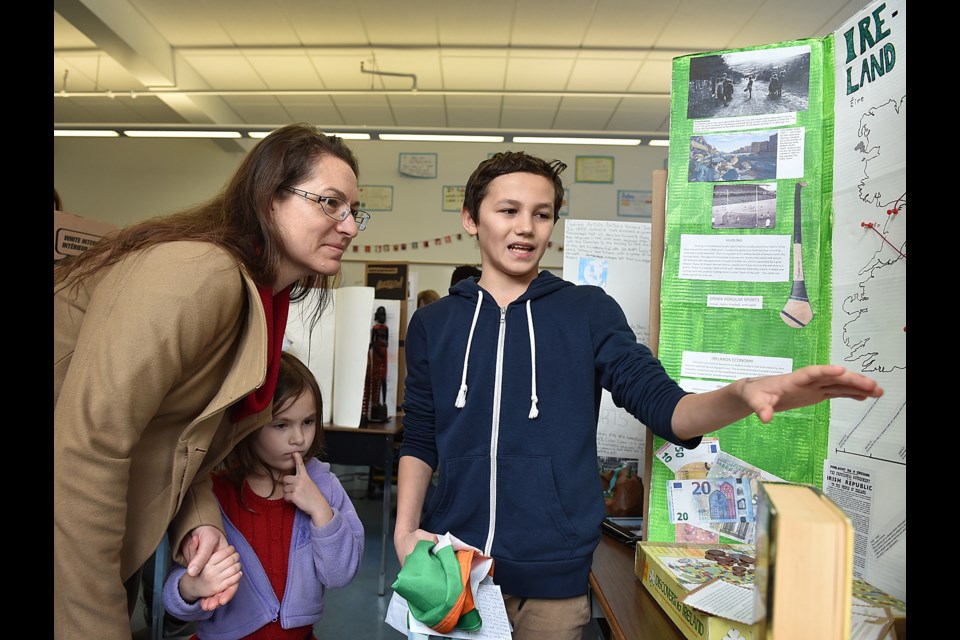Keane Joya is pretty stoked on Ireland.
The plucky Grade 7 Lord Strathcona elementary student told the Courier as much while he and his classmates showed off research projects delving into different countries and cultures.
“My uncle is from Ireland and he always tells me cool stories and legends and facts from Ireland and he’s been there many times,” Joya said. “It’s cool to learn about facts and the things that happen in different countries.”
Long before discussing the Emerald Isle, Joya led Vancouver School District staff, trustees, planners and architects on a tour of his revamped digs on East Pender Street.
The 130-year-old school was recently given the seismic upgrade treatment, in what was a $30-million exercise that’s been eight years in the making.
What separates the Strathcona retrofit from other upgrades is the method employed, which is referred to as seismic base isolation. That system involves essentially cutting the building in half and installing rubber buffers between the levels to mitigate shaking. That buffer zone deflects an earthquake’s tremors, confining the shaking to the school’s basement level. Next to nothing will be felt on the upper levels where the school’s staff and students inhabit.
“If there’s a movement or a seismic event, there is an isolation. The ground will move, the upstairs will not move at all,” said Michael Keenan, a project manager with Heatherbrae Builders.
Lord Strathcona is the first building in Canada to use seismic base isolation and the second oldest building in North American built using that method. The project garnered the school the Lieutenant Governor’s Award of Excellence at the 2017 Awards for Engineering Excellence.
Base isolation is commonly employed in Japan on building types with small footprints and large towers. The more common process of seismic upgrading in Vancouver involves reinforcing the footings and foundation of a school, which inevitably leads to changes in a school’s look and character.
Base isolation was used at Lord Strathcona to preserve the school’s building character — the heritage look wasn’t altered — and because of the lack of mechanical components in the school’s basement.
Opened in 1891, Lord Strathcona is the oldest school in Vancouver still operating on the original site it was built on. About 60 other schools across the city still require seismic upgrades, of which five have project agreements in place and are in the design phase.
@JohnKurucz



